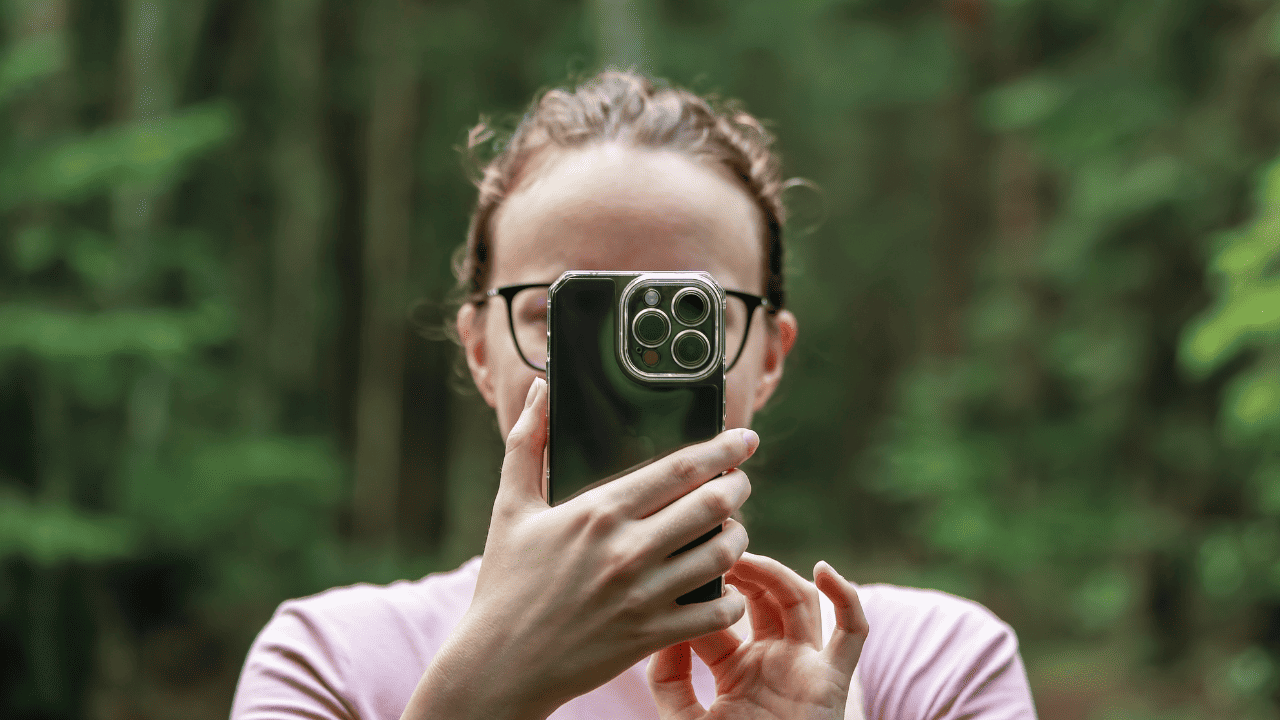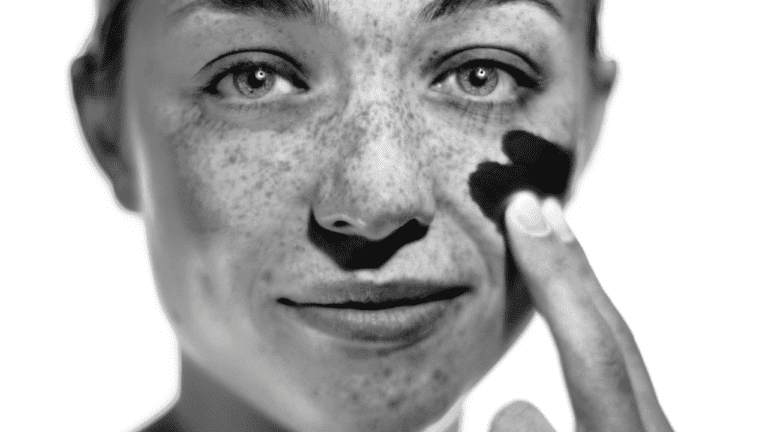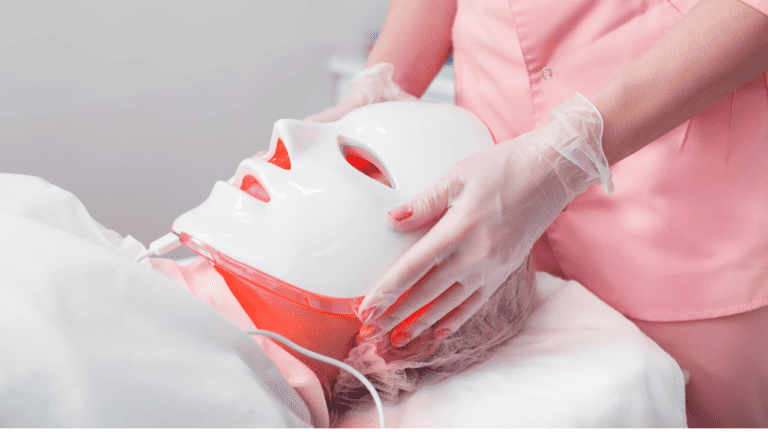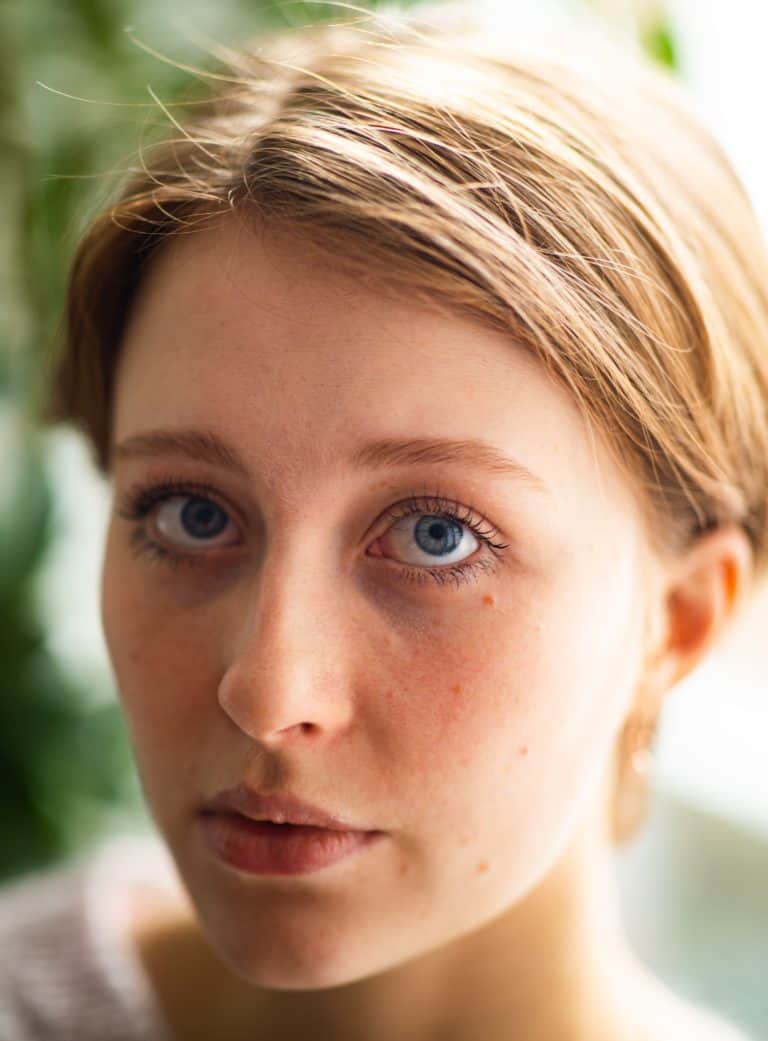The short answer is: Yes, iPhone cameras do make your acne look worse! You might have noticed that when you snap a picture, iPhone camera software actually over-sharpen and over-contrast photos during the post-processing stage.
The hardware includes a lens, image sensor, and processor, while the software includes algorithms that adjust the image’s brightness, contrast, and colour. These algorithms can sometimes exaggerate skin imperfections, making acne look worse than it actually is.
This causes our skin texture and pores to appear more defined and exaggerated after taking selfies. Let’s understand why iPhone Camera Technology does this, and how to fix it.
Key takeaways
- iPhone cameras use hardware and software, which can exaggerate imperfections.
- Lighting, angle, and resolution can reduce acne visibility.
- Natural light, overhead angle, and photo editing apps can help resolve this.
how iPhone Cameras make acne look worse

1. Image Processing Algorithms Make Images Clearer
The iPhone camera uses sophisticated image processing algorithms to enhance the quality of photos taken with the device. These algorithms are designed to improve the overall sharpness, color, and contrast of the image. The algorithms also help to reduce noise and distortion in the image, resulting in a clearer and more detailed photo.
2. Lighting and Exposure Settings
The iPhone camera has a range of lighting and exposure settings that can be adjusted to improve the quality of the photo. These settings include HDR, which stands for High Dynamic Range. HDR is designed to capture a wider range of light and dark tones in the image, resulting in a more natural-looking photo. The camera also has exposure compensation settings, which can be used to adjust the brightness of the image.
Overall, the iPhone camera is a highly sophisticated piece of technology that uses a range of image processing algorithms and advanced camera settings to capture high-quality photos. While the camera can accentuate skin imperfections like acne, it is not designed to make them look worse. With the right lighting and exposure settings, it is possible to take photos that minimize the appearance of acne and other skin blemishes.
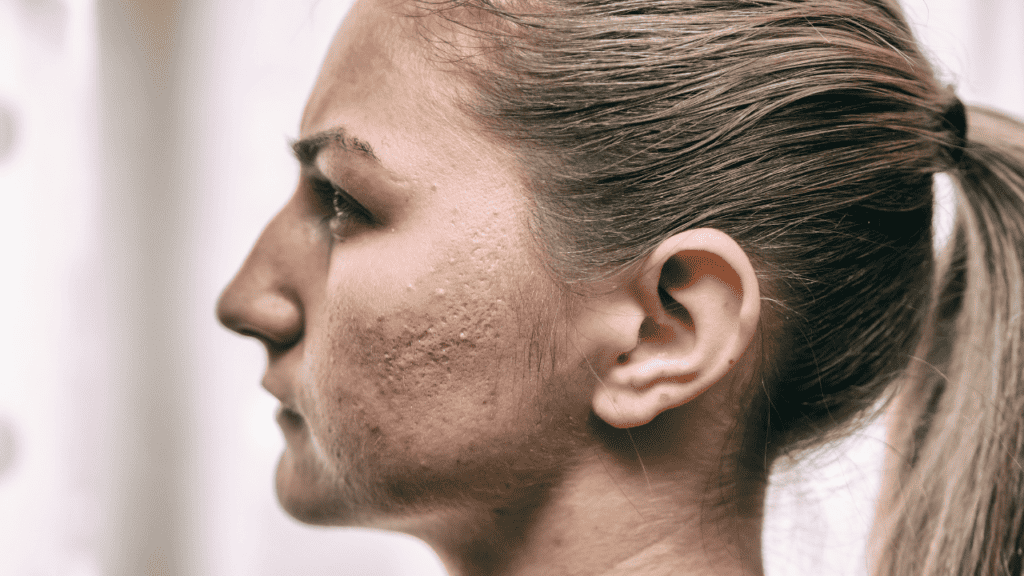
3. Sharpening effects on Detail and Texture
The high-resolution cameras on iPhones can capture incredible detail and texture of the skin, but they also often sharpen the photo. That’s why your scar acne may look worse in pictures. This can be both a blessing and a curse for those with acne-prone skin as it highlights the texture of the skin across our entire face when usually our eyes focus on one spot at a time.
This makes texture more pronounced in photos as the camera can even pick up on the smallest details including blemishes, redness and oil.
4. Color Balance and Skin Tone
The color balance of an iPhone camera can also have an impact on skin appearance. The camera may not always capture the correct skin tone, which can make the skin look washed out or too red. iPhone cameras often enhance darker tones to create contrast so when you take a picture, it processes it and red marks such as Acne scars look darker.
5. Portrait Mode and Skin Flaws
Portrait mode is a feature on newer iPhones that is designed to blur the background and focus on the subject’s face. While this can create a beautiful effect, it can also highlight skin flaws. The camera is designed to pick up on even the smallest imperfections, including pores and facial features.
6. It’s closer than usual
When we take photos, selfies in particular our camera is closer to our face than usual, in comparison to when we look at our face in the mirror. Even if we are able to bring our faces close enough to the mirror, our eyes can only focus on one spot at a time and not every single texture and detail of our whole face that selfie photos portray.
How to reduce Acne Visibility in Photos
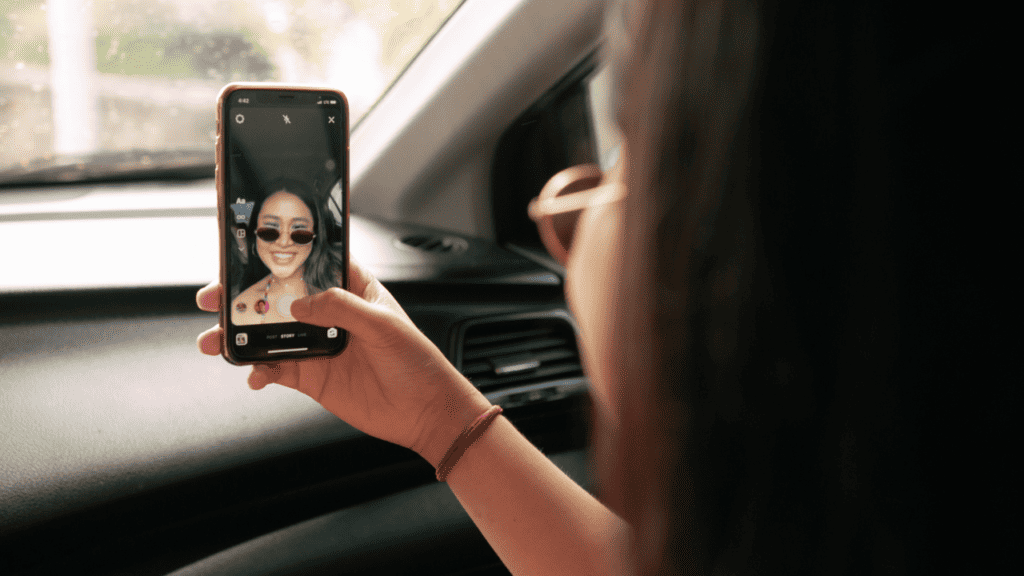
Taking photos with an iPhone camera can sometimes make acne appear more noticeable and severe than it actually is. However we can combat this with several factors such as lighting, distance, angles, makeup and skincare products.
1. Natural vs. Artificial Lighting
Lighting is one of the most significant factors that can affect the appearance of acne and acne scars in photos. Natural lighting is often the best choice for taking photos as it is diffused and soft, which can help to minimize the appearance of blemishes. On the other hand, harsh lighting, such as direct sunlight or bright indoor lights, can emphasize skin imperfections, including acne.
Artificial lighting can also affect the appearance of acne in photos. The camera’s flash and sensors may emphasize the contrast between the blemishes and the surrounding skin, making the acne appear more noticeable and severe. Therefore, it is recommended to avoid using the camera flash when taking photos of acne-prone skin.
2. Distance and Angles
Most often we observe acne and acne scars after taking a bunch of selfies because the distance and angles at which selfie photos are at a close distance. This highlights skin imperfections, including acne, while taking photos from a farther distance can help to minimize the appearance of blemishes.
Additionally, taking photos from a higher angle can help to minimize the appearance of acne as it can make the face appear slimmer and more defined. On the other hand, taking photos from a lower angle can emphasize skin imperfections, including acne.
3. Makeup and Skincare Products
Makeup and skincare products can also influence the visibility of acne in photos. Some makeup techniques, such as highlighting and contouring, can make the acne appear more prominent in photos.
Considered adding makeup primers for enlarged pores to your makeup routine to help smooth out texture. Color-correcting concealers also help to reduce acne redness and acne visibility in photos.
Skincare routine is also important when it comes to taking photos of acne-prone skin however it requires a lot more time and patience. Using gentle cleansers and avoiding harsh exfoliants can help to prevent skin irritation and redness, which can make the acne appear more noticeable in photos.
Tips for Better Skin Representation in Selfies

Taking selfies is a fun way to capture moments and memories. However, sometimes the camera can make acne look worse than it actually is. In this section, we will discuss some tips for better skin representation in selfies.
Editing and Filters Usage
Photo editing apps can be a great tool to improve the quality of your selfies. However, it’s important to use them wisely. Over-editing can lead to an unnatural look, which defeats the purpose of capturing natural beauty. A good practice is to use editing apps that allow for subtle adjustments to color balance, brightness, and contrast.
Filters can also be a great way to enhance your selfies. However, it’s important to choose filters that enhance your natural skin tone instead of altering it completely. It’s also a good practice to use filters sparingly and not rely on them too heavily.
Good Practices for Selfie Taking
Taking a good selfie is all about finding the right lighting and camera angle. Good lighting can make all the difference in capturing a clear and flattering image. Natural light is the best option, as it provides the most accurate representation of your skin. If natural light is not available, it’s important to choose a well-lit area to take your selfie.
Camera angles can also play a big role in how your skin looks in a selfie. It’s important to experiment with different angles to find the one that works best for you. A good practice is to hold the phone slightly above eye level and tilt your head slightly to the side.
Conclusion
iPhone cameras have become increasingly popular in recent years, with many people using them to take selfies and photos of their surroundings. However, some people have noticed that their skin looks worse in iPhone photos than it does in real life. This has led to questions about whether iPhone cameras make acne look worse.
Factors influencing acne visibility in photos include lighting, camera angle, and image resolution. Lighting can have a significant impact on how skin appears in photos, with harsh lighting making acne more visible. Camera angle is also important, as photos taken from below can make acne appear more prominent. Finally, image resolution can affect how much detail is visible in a photo, with higher resolution images making acne more visible.
Frequently Asked Questions
Why does acne appear more prominent in photos taken with an iPhone?
Acne appears more prominent in photos taken with an iPhone due to the camera’s high-resolution display, lighting, and exposure settings. The camera’s flash and sensors may emphasize the contrast between the blemishes and the surrounding skin, making the acne appear more noticeable and severe.
Additionally, the camera produces a blue light that makes the skin look paler than usual, which can make blemishes and redness stand out even more.
Can lighting conditions affect the visibility of acne in iPhone photographs?
Yes, lighting conditions can affect the visibility of acne in iPhone photographs. Poor lighting conditions can make the skin look dull, and blemishes and redness can appear more prominent.
On the other hand, bright lighting conditions can make the skin look too bright and washed out, which can also make blemishes and redness stand out.
Is there a way to reduce the appearance of acne using iPhone camera settings?
There are a few ways to reduce the appearance of acne using iPhone camera settings. First, users can adjust the exposure and brightness settings to reduce the contrast between the blemishes and the surrounding skin.
Additionally, users can try using the “Portrait” mode, which blurs the background and focuses on the subject’s face, making blemishes and redness less noticeable. Finally, users can try using a third-party app that offers more advanced editing tools to further reduce the appearance of acne.
Overall, while iPhone cameras can make acne appear more prominent, there are ways to reduce the appearance of blemishes and redness using the camera’s settings and third-party apps.
